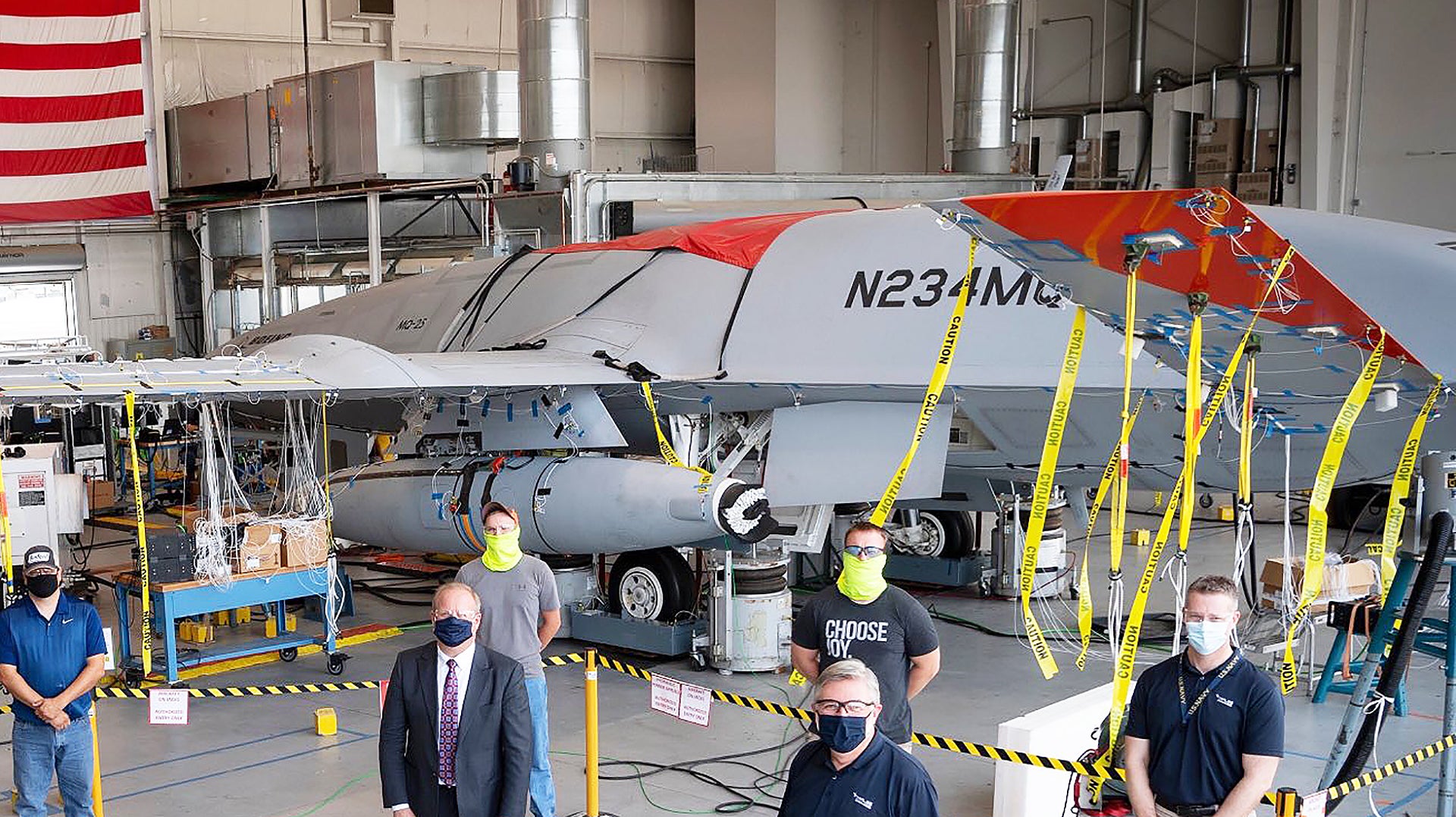We now have our first look at Boeing’s MQ-25 carrier-based tanker drone test article, also known as T1, carrying a Cobham buddy refueling store under its wing. Senator Tammy Duckworth, a Democrat from Illinois, Tweeted pictures of T1 after a recent tour of MidAmerica Airport, where work on and various testing of the unmanned demonstrator have been going on for more than a year now.
Duckworth said she had visited Boeing’s facilities at MidAmerica last week as part of a larger visit. The airport, which is adjacent to Scott Air Force Base, is situated in the southwestern end of Illinois, approximately 18 miles east of St. Louis in neighboring Missouri. Boeing moved T1, which also carries the U.S. civil registration code N234MQ, there in April 2019 and that’s where it took its first flight five months later.


“Last week I visited @MAAirport, where I met with local officials and viewed the Navy’s new MQ-25 unmanned aircraft system,” Duckworth wrote on Twitter in addition to posting the pictures. “MidAmerica Airport is an important driver of our state’s economy, and I’ll keep working to make sure it has the federal support it needs.”
Senator Duckworth is a U.S. Army veteran and former Lieutenant Colonel who lost both her legs when a rocket-propelled grenade hit her UH-60 Black Hawk helicopter during a mission in Iraq in 2004. She was a member of the House of Representatives from Illinois between 2013 and 2017 before winning her current Senate seat. She is now a member of the Senate Armed Services Committee, among other assignments, and is a contender to be Joe Biden’s running mate in this year’s presidential election.
As noted, Boeing has been working on the T1 demonstrator at MidAmerica since 2019. The company had won the Navy competition to design and build the MQ-25 Stingray tanker drone the year before. The ability to carry the Cobham buddy refueling pod, which the service’s F/A-18E/F Super Hornets carry when acting as carrier-based tankers now, was a key requirement for what had become known as the Unmanned Carrier Aviation (UCA) program. This was an outgrowth of the abortive Unmanned Carrier Launched Airborne Surveillance and Strike (UCLASS), a saga you can read about in more detail in this past War Zone piece.

The T1 test article is a modified version of the design that Boeing submitted to the UCLASS program. The company is now under contract to deliver four more refined Engineering Development Model (EDM) prototypes, the first of which it is scheduled to deliver to the Navy next year. The plan is to have the remaining three finished by 2024.
Boeing has said it hopes to get T1 onto the deck of a Navy aircraft carrier sometime in the future to begin conducting various deck handling tests. However, actual carrier-based flight testing, which will use the EDM prototypes, isn’t scheduled to begin until 2022.
The MQ-25 could offer revolutionary benefits for the Navy’s carrier air wings, fundamentally altering how they operate in the future. It will also relieve the service’s F/A-18E/F Super Hornets from having to fly in the tanker role, freeing them up for other missions and otherwise reducing the strain on that fleet.

The Stingrays, or follow-on variants or derivatives thereof, could eventually take on other missions, including intelligence, surveillance, and reconnaissance, as well. The Navy continues to say that it believes its carrier air wings will continue to evolve to contain a mix of manned and unmanned platforms.
The picture that Senator Duckworth shared shows that, at least right now, Boeing continues to conduct work that supports the development of the MQ-25 in its initial tanker role.
Contact the author: joe@thedrive.com
